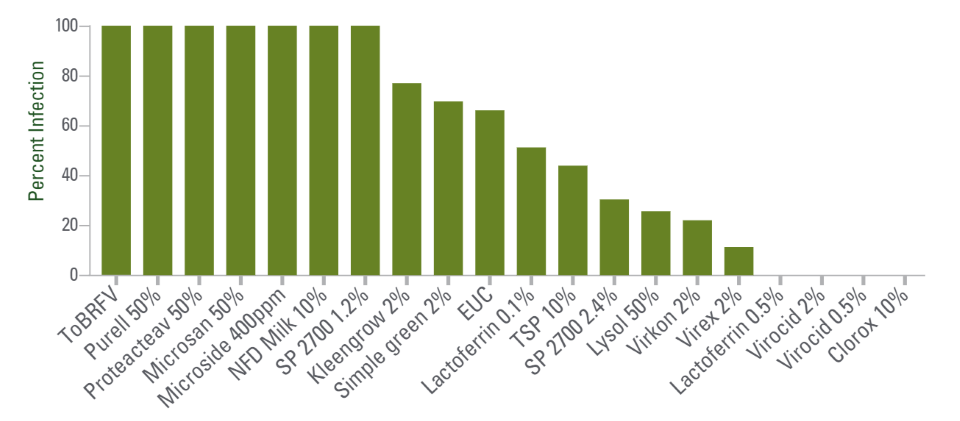A New Tool To Fight Tomato Brown Rugose Fruit Virus
The new tomato malady, tomato brown rugose fruit virus (ToBRFV), has arrived in North America, and it’s creating havoc for growers. These growers have already lost hundreds of millions of dollars in the past two years due to the disease, says Michael Bledsoe, Vice President Food Safety & Regulatory Affairs at Village Farms.
The disease spread widely through contaminated seed stock. USDA stepped in to control its spread with quarantines. They tested tomato shipments into the U.S. from Canada and Mexico.
Unfortunately, border inspectors did not have a specific test for ToBRFV. If they got a positive for tobamoviruses (the group ToBRFV falls within, represented by tobacco mosaic virus), they would hold the shipment until a lab could confirm ToBRFV. Unfortunately, the results may take several days, effectively killing the shipment.
“They were stopping 40% of all shipments, July 2020,” Bledsoe says.
How To Prevent Spread
The first line of defense against a disease is growing resistant cultivars. ToBRFV is so new, however, breeders haven’t had the chance to introduce them yet.
Another challenge was that, although growers are told to take preventative measures to help manage highly contagious viral diseases like ToBRFV, there was no data about which disinfectants deactivate it.
Enter Kai-Shu Ling, Research Plant Pathologist (Virology), USDA-ARS, U.S. Vegetable Laboratory. He tested 16 different disinfectants (three of those in different concentrations) to see what had the best effect.
The chart below explains what he learned.

Source: Dr. Kai-Shu Ling, Research Plant Pathologist (Virology), USDA-ARS, U.S. Vegetable Laboratory, Charleston, VA.
Which Disinfectants Lower Tomato Brown Rugose Fruit Virus Infection Rates on Tomato Plants
USDA-ARS researcher Kai-Shu Ling tested chemicals based on their increasing efficacy (with decreasing infection rate) against ToBRFV.
Ling’s research focuses on deactivating the virus infectivity on tomato plants of a virus inoculum in less than 60 seconds’ exposure to the chemical. The greenhouse tomato industry’s growers often require disinfectants that work quickly. They’re used on a wide array of items, such as disinfecting tools, work carts, and in disinfecting shoes entering greenhouses.
Ling found four treatments from three disinfectants (0.5% and 2% Virocid, 0.5% Lactoferrin and 10% Clorox) generated 0% infectivity on test plants.
Five other treatments displayed some effect but not enough, generating only 10% to 45% infection rates on the test plants (2% Virex, 2% Virkon, 50% Lysol, 2.4% SP 2700, and 10% trisodium phosphate).
“However, it is important to note that 2% Virex, 2.4% SP2700, and 2% Virocid showed some level of phytoxicity to the test plants upon treatment,” Ling says.
Other chemicals may still be effective if given longer exposure time for other applications. However, this study focuses mainly on quick actions against virus infectivity under very short exposure times.









